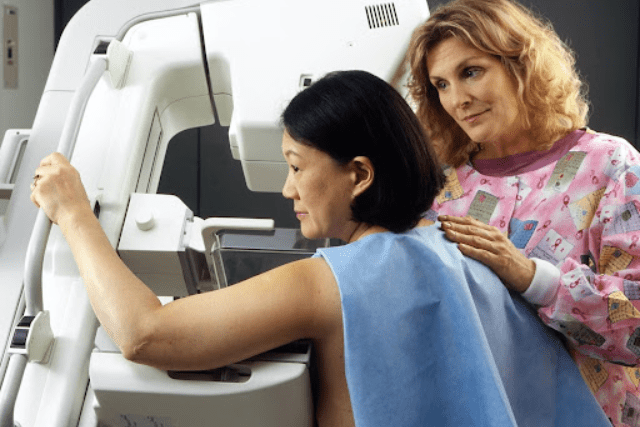Questo post è stato aggiornato di recente il 25 luglio, 2023

The liver is a crucial organ that plays a vital part in the detoxification, metabolism, digestione, excretion, and transport of hormones.
però, like any other organ, the liver can suffer certain diseases and injuries. To diagnose any disease in its early stages and prevent further progression, you should listen to your healthcare provider’s advice and go for regular check-ups.
In questo articolo, we’ll discuss the most common advanced methods for diagnosing liver diseases and what each one represents.
Common Liver Function Tests
Common liver function tests are a series of special blood tests that can determine whether the liver is damaged or functions properly. Per esempio, un' NASH test liver procedure helps the differential diagnosis of NAFLD – Non-Alcoholic Fatty Liver Disease and NASH – Non-Alcoholic Steatohepatitis.
These tests include:
Serum Alkaline Phosphatase Test
Used to measure the alkaline phosphatase levels in the blood. It’s an enzyme found in tissues in the biliary tract, the liver, and the bones. The test is performed to detect the presence of any lesions like abscesses or tumors that might obstruct normal liver functioning.
Copyright: National Cancer Institute on Unsplash I License: CC0 Public Domain
Serum Bilirubin Test
Measures the bilirubin levels in the blood, so elevated levels of the protein will indicate a bile problem or liver obstruction.
Serum Aminotransferases Test
This is a common liver function test that examines the normal release of the aminotransferases in the liver, which are released in the blood when the liver becomes damaged.
Alanine Transaminase Test (ALT)
Measures the levels of alanine aminotransferase, which releases in the blood when the liver is predominantly damaged, or the patient is infected with hepatitis.
Prothrombin Time Test
It’s a test performed to determine the blood clotting time; prolonged clotting indicates vitamin K deficiency or any other deficiency that participates in the blood clotting process.
Serum Albumin Test
Albumin is a protein present in the blood, and its elevated levels indicate a liver disease that requires further diagnosis.
Gamma-Glutamyl Transpeptidase Test
This test is performed when the healthcare provider wants to ensure the liver is working correctly or if there’s alcohol ingestion in high amounts.
Alpha-Fetoprotein Test
This type of test is performed when it is suspected the patient is suffering from cancro. It’s also done to assess the effectiveness of the therapy in the cancer treatment journey; Alpha-Fetoprotein is a type of protein released in the blood and produced by certain types of tumors, like hepatomas, and it’s also produced by fetal tissue.
Mitochondrial Antibodies Test
Used to determine whether the patient has chronic active hepatitis, biliary cirrhosis, or autoimmune disorders.
Imaging Tests
Imaging tests are predominantly used as noninvasive advanced imaging methods to detect the stiffening or hardening of the liver. Your doctor might order some of these tests to rule out a specific liver problem.
Such tests include:
MRI
Magnetic Resonance Imaging is a medical imaging technique that generates a detailed image of the body’s insides, including the tissues and organs. It’s a non-invasive diagnostic method that produces high-quality images that help physicians in the diagnosis of a variety of liver problems.
CT
Computerized Tomography is a diagnostic method that combines the X-ray images from the scanning. It uses computer processing to create cross-sectional images of the internal organs, tissues, blood vessels, and bones in the body.
This type of diagnostic method is well-suited to the examination of people who might suffer from liver diseases like liver cancer, hepatitis, fibrosis, and cirrhosis. The doctor might recommend CT to diagnose liver disorders, pinpoint the location of a liver tumor, detect and monitor liver diseases, monitor the effectiveness of the therapy, or detect internal bleeding and injuries.

ultrasuono
it’s also called diagnostic medical sonography, and it is an imaging method that produces images of the structures within the body by using waves. These images provide invaluable information for detecting liver issues, diagnosing certain conditions, assessing liver inflammation, and examining liver lumps or cancers.
Biopsy
Il liver biopsy is an invasive diagnostic method that includes a collection of a tissue sample from the liver for further lab analysis. A biopsy is recommended when the healthcare provider suspects malignancy or to identify the extent, severity, or cause of liver damage.
The most common liver biopsy is a percutaneous liver biopsy, which involves the insertion of a thin needle through the belly into the liver.
Your doctor might recommend additional blood tests and imaging results alongside the biopsy to look for signs of disease or damage. The biopsy results help doctors to determine the right treatment and monitor the course of the disease.
Contact Your Healthcare Provider
If you or a loved one experiences liver disease symptoms, make sure you contact a healthcare provider. Your doctor is likely to recommend certain diagnostic methods to rule out particular diseases or monitor for signs of disease complications, progressions, or even cancer.


